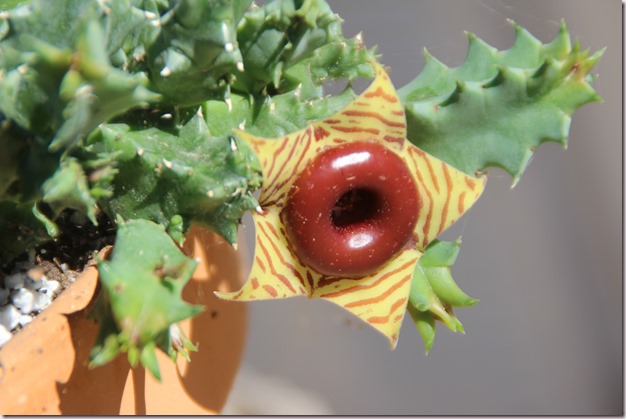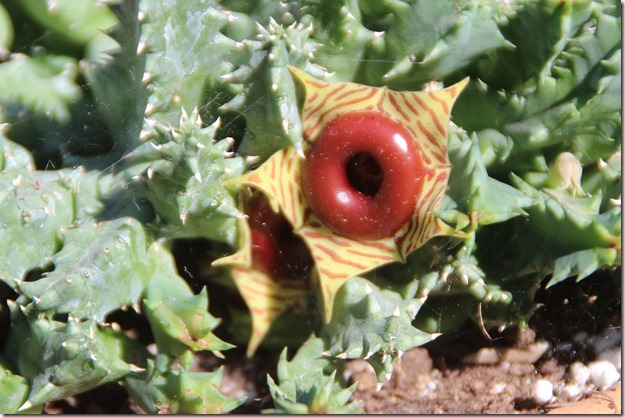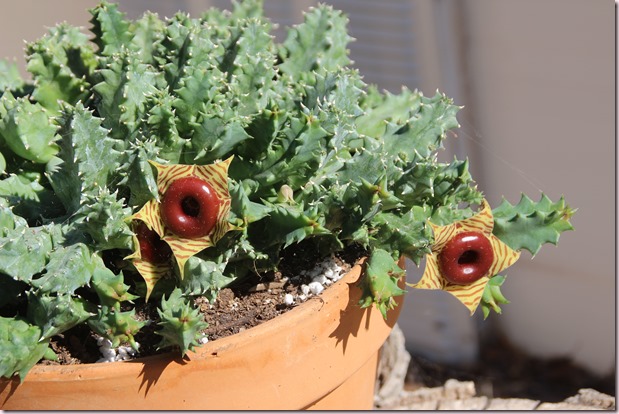I have been looking for more stapeliads and huernias to add to my collection because of their striking flowers with their intricate designs and wonderful colors. I was finally at the right place at the right time the other day and came across this huernia zebrina de marco, also called a lifesaver flower because it looks like, well, a lifesaver. 
I have written about stapeliads and huernias before, and at first tried to make this plant a stapeliad, but after some checking and double-checking and finding more than one spelling for it, I am satisfied it is a huernia zebrina de marco.
Stapeliads and huernias are closely related and were once grouped together, but are now placed each in their own genus. Both originate in Africa, mostly in the south and east. I read that the huernia segments are sometimes eaten in times of need, cooked with sorghum. I’m sure there are very scientific reasons they are classified separately, but based on my observations the main differences might be that stapeliad flowers have a hairy covering and that lovely carrion smell, and huernias have no smell and the flowers have a smooth, waxy finish.

I have read that they will rot easily if allowed to stay wet too long, so you might be careful of your watering. They are easy to propagate by twisting off one of the segments, letting it dry overnight and then planting. Coming from Africa, they will not be cold-hardy, so bring them in for the winter. 
I have enjoyed watching this one bloom, and it just makes me want to add more huernias and stapeliads to my collection. I hope you can find some for your collection, too.
Recent Comments